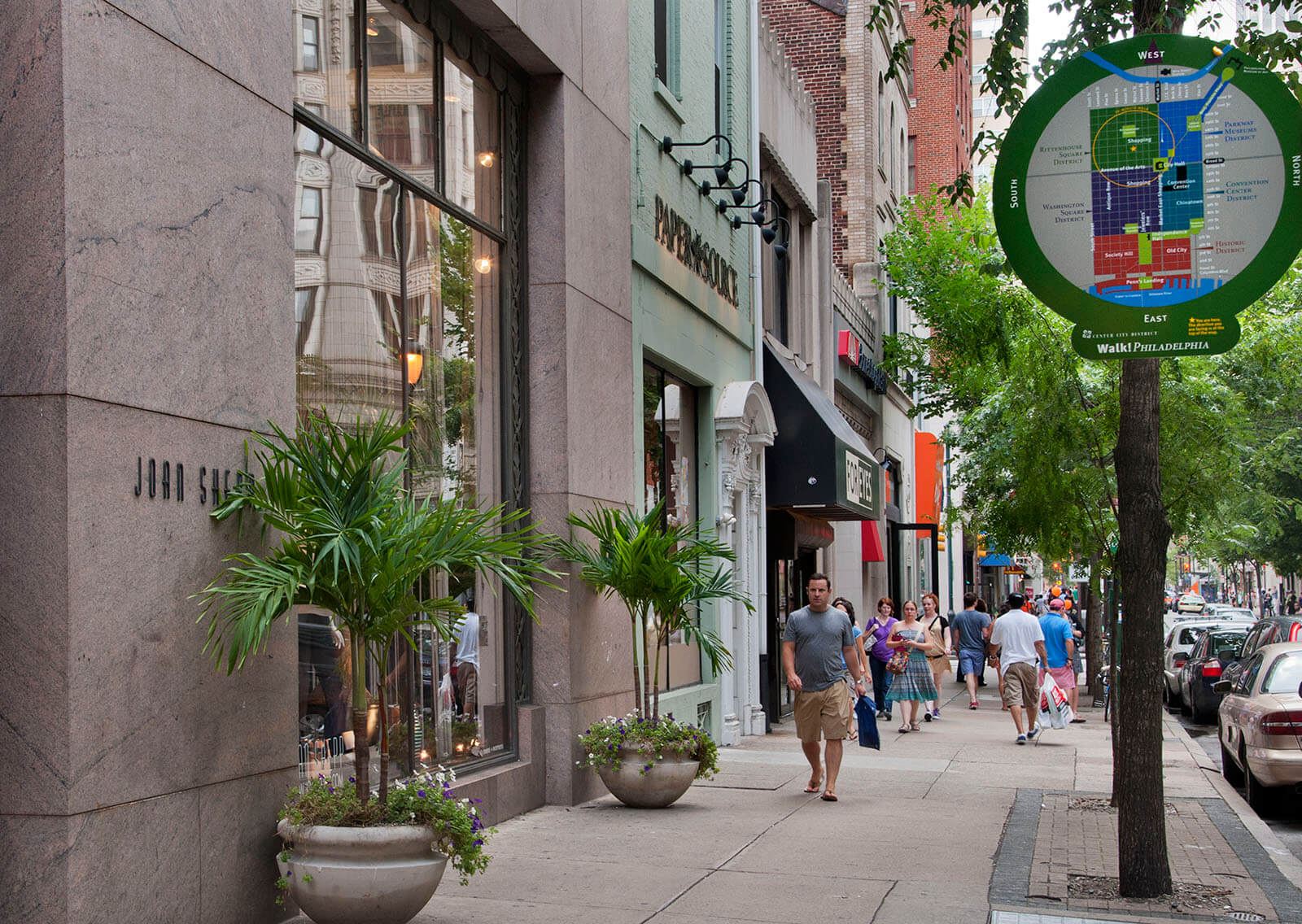As summer turned to fall, Center City started to find its bearings during the pandemic, not entirely shrugging it off but not wallowing in defeat either.
Restaurants got more innovative with outdoor dining and the Philadelphia Streets Department went into action, temporarily shutting down some streets to vehicular traffic to create newly formed public spaces that played host to diners and provided more room for those looking to get a taste of pre-pandemic normalcy.
Retailers cleaned up from the civil unrest and looting. They took down plywood protecting their shops and invested in repairs that allowed them to reopen. Fitness classes, from yoga to spinning and boot camps, and other activities moved outdoors.
While an aggressive resurgence of the coronavirus is forcing renewed restrictions in the city and dampening some of this activity, the pandemic has led Philadelphia to become more vibrant as it began learning how to better use outdoor spaces.
What’s missing is the office population.
A survey of major office tenants conducted in October by Central Philadelphia Development Corp. found that the 38 responding firms had a combined 15,436 employees working in Center City this past February. Of those firms, 39% had no workers in their offices at the time of the survey and 37% had just 10% of workers back at their desks. Only 8% of responding companies reported having between 20% and 30% of their employees back in the office, and 16% had more than half back.
Most of the companies were either projecting a spring 2021 return (42%) or were planning to wait until the summer (18%). A mere 13%expected to have a majority of their employees return to the office in January.
How companies are evaluating those targets in light of a new surge in coronavirus cases, reinstated restrictions and promising vaccines on the horizon is unclear. What is certain is the affect the lack of office workers is having on the city’s retail sector.
The absence of office workers, tourists and other visitors has caused Center City’s retail market to take an estimated $1 billion hit this year, according to JLL data.
As a result of just a fraction of the office population trickling into the Central Business District, the ecosystem that caters to those workers is taking a hit with no prediction in how and when it might recover. Companies that support office workers are vast. They range from printing shops, caterers, food trucks and delicatessens to dry cleaners, hair dressers, nail salons, shoe repair shops, and jewelry and clothing stores.
“The office population tremendously affects retail,” said Paige Jaffe, managing director at JLL. “It’s challenging but these businesses have had to figure out how to be nimble.”
Philadelphia’s High Street Corridors — Walnut and Chestnut streets— were already struggling before the onset of the coronavirus, and the pandemic has compounded the challenges they were already facing. Depending on the block, the vacancy rate on Walnut is more than 30% and the pending vacancy will push to 50%, according to JLL data. Chestnut is faring better and its pending vacancy won’t exceed 40%.
“When you go from tens of thousands of people walking by your door every day to hundreds who may be weary of walking inside, sales are going to suffer,” said Veronica Blum, a principal at MPN Realty. “This has hurt the small local business owners harder than the national chains because of relatively limited resources and a lack of safety nets.”
The lack of daytime activity isn’t limited to the CBD or nearby High Streets. It has also affected neighborhood commercial corridors as well, Blum said. “When I speak with an owner who says they are surprised at how well they are doing and then disclose they are at 30% of where they were this time last year, my heart sinks,” she said.
Food and beverage retailers most often look at daytime population when they are scouting out locations, said Douglas J. Green, a principal at MSC Retail. For a restaurant that aims to serve meals during a robust lunch rush and dinner hour along with an added happy hour, people working in office buildings are necessary.
“At the end of the day, for most retailers, traffic is everything,” Green said. “That’s come from density in office, residential and tourism. Not having these office buildings occupied is an issue.”
There’s also a halo effect the office population has on retailers, whether that’s a florist or a clothing store. As workers spill out of buildings to get lunch or a coffee, they stroll by stores and either impulse shop or have something in mind that they want to pick up. Those chance encounters or deliberate errands just aren’t happening.
“The ecosystem of people not being in offices is far more disruptive in an urban environment than a suburban environment,” Green said. “It’s not only people not being in the office but people who are back in the office with their old habits. People who do come into the office bring their own lunch for health reasons and they are going out of their office with less frequency for meetings, coffee, happy hours.”
The absence of office workers hasn’t been totally offset by Center City’s residential population but it has, to some degree, been a saving grace and fueled much of the dining and shopping activity that remains. Center City’s population has steadily grown over the last decade as new apartments and condominiums were built and urban living became more desirable.
“The fact that people will sit on 18th Street and dine and go into stores and shop is encouraging,” Jaffe said. “The residential population has really helped the city remain vibrant and feel alive. If you walk the neighborhoods, they feel normal.”
While that may be a silver lining, there are others in an otherwise grim retail market. Landlords that have the financial wherewithal acknowledge vacancies could become a compounding problem and that it is in everyone’s best interest to keep the leases they have in place, even if it means complete flexibility in the short term, Blum said.
“We have seen landlords get creative on keeping tenants who want to stay, abating or deferring rent where they can,” she said.
Some of the vacancies also provide opportunities to those restaurants or retailers who want a prime location but found it wasn’t available or affordable until now.
The glimmers of hope amid despair are few and far between and will test Philadelphia’s resiliency. Paul Levy, CEO of Center City District, points to the city emerging stronger and more diversified after the Great Recession as an example.
“A crisis like this creates opportunity to rethink things, not only the streets but how we are funded and taxes and how we can be more pandemic proof,” he said.
While reimagining streets for dining and greater use of public spaces is probably here to stay, the pandemic has, again, exposed Philadelphia’s dependence on the wage tax, Levy said.
It’s expected that many of those suburban office commuters working from home will seek a wage-tax refund, costing the city millions in lost revenues. The wage tax generated $1.61 billion in revenue for the city in fiscal year 2019 and accounts for a third of its budget.
That said, Levy is confident in Philadelphia’s future and it eventually rebounding. “This winter will be a challenge,” he said. “But, if I look ahead 12 to 18 months, I’m optimistic.”






